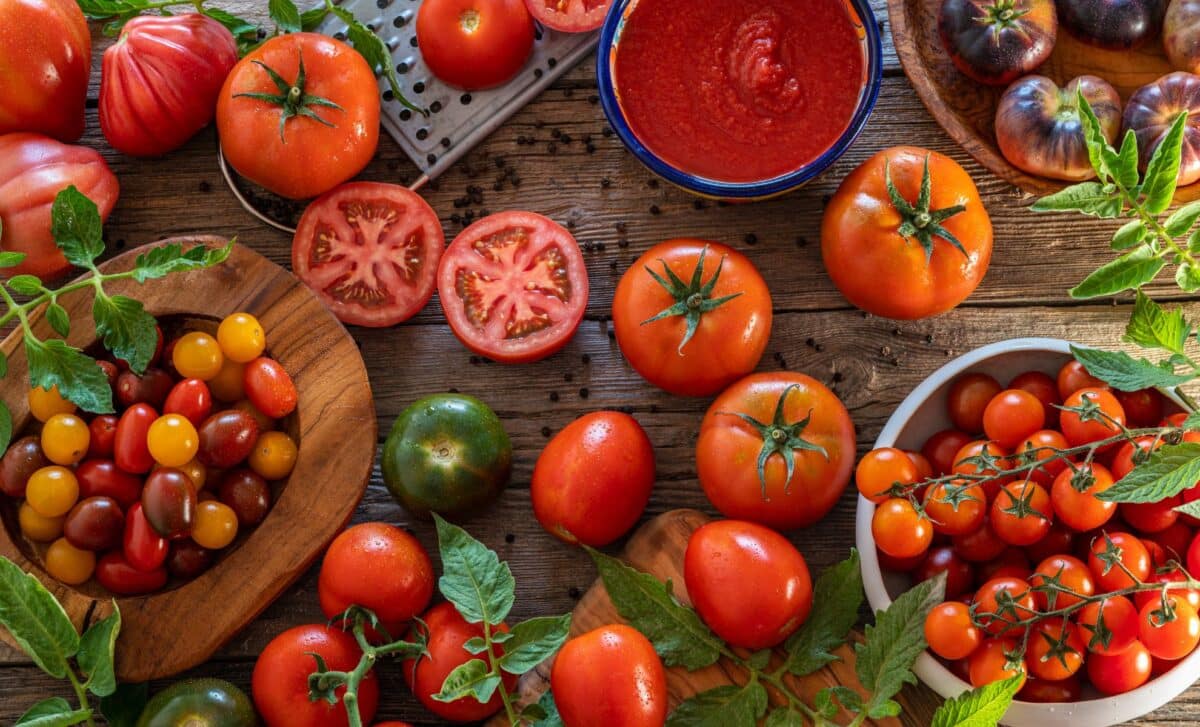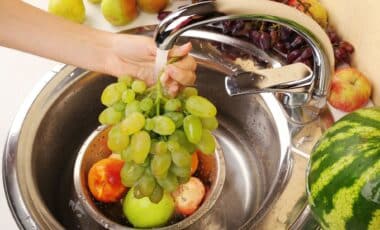Tomatoes are a kitchen staple, yet few people really know how to store them properly. Between the fridge, the fruit bowl, or the pantry, advice often conflicts. The truth is that temperature and placement play a key role in preserving their texture and taste. Traditional know-how combined with a few practical tricks offers a clear solution.
Why The Fridge Is Not The Best Option
Placing tomatoes in the fridge may seem like a way to keep them fresh longer, but in reality, it alters their taste. As Daniel Gritzer, the Editorial Director of Serious Eats, points out,” The refrigerator is not great for tomatoes—it can degrade their texture and dampen their flavor—but it’s far more harmful to lower-quality and underripe tomatoes than it is to truly ripe, delicious ones.”
Cold temperatures slow ripening but also break down the delicate compounds that give tomatoes their aroma. This is why a chilled tomato often tastes flat and has a mealy texture. For anyone who loves a flavorful salad, the fridge is best avoided unless the tomato is already very ripe and needs to be held back for just a short while.
The best spot is at room temperature, in a dry, shaded corner of the kitchen. A wooden crate, a wicker basket, or even a simple ceramic dish works perfectly. What matters most is that the fruits can breathe. Unlike other produce, tomatoes do not like to be stacked tightly; they need a little space to avoid bruising.
Grandmothers often placed tomates stem side down, which helps prevent air from entering the fruit and slows the ripening process. This simple gesture can extend their freshness by several days without losing flavor.
You’ve Been Skipping This 4-Minute Ritual — And Your Summer Skin Is Paying the Price
Storing Tomatoes For The Winter
For those who want to enjoy garden tomatoes during the colder months, there are methods that go beyond everyday storage. One classic trick is to harvest the tomatoes before they are fully ripe, keeping them in a cool and ventilated room where they will slowly finish maturing. Wrapped individually in paper or stored in boxes lined with straw, they can last weeks.
Another approach is preservation through cooking or bottling. Making a simple tomato sauce, sealing it in sterilized jars, or preparing sun-dried slices in olive oil are age-old techniques that keep the taste of summer alive throughout winter. These practices remain popular because they are both economical and effective.
Mistakes You’re Probably Making Every Day
Many people place tomatoes near apples or bananas without realizing that these fruits release ethylene gas, which accelerates ripening. While this is useful if you need to ripen green tomatoes quickly, it shortens the storage life of ripe ones. Another mistake is leaving them in plastic bags, where moisture builds up and mold can form. Tomatoes do best in open air, away from direct sunlight, but never sealed off.
Today’s kitchens are filled with gadgets, yet the old-fashioned advice remains the most reliable. Choosing natural storage solutions, such as baskets and paper wrapping, often works better than complicated tools. Combining tradition with small modern adjustments—like using a cool pantry or a basement room—provides excellent results. These low-tech methods are sustainable and align perfectly with current interests in reducing waste and preserving food naturally.







